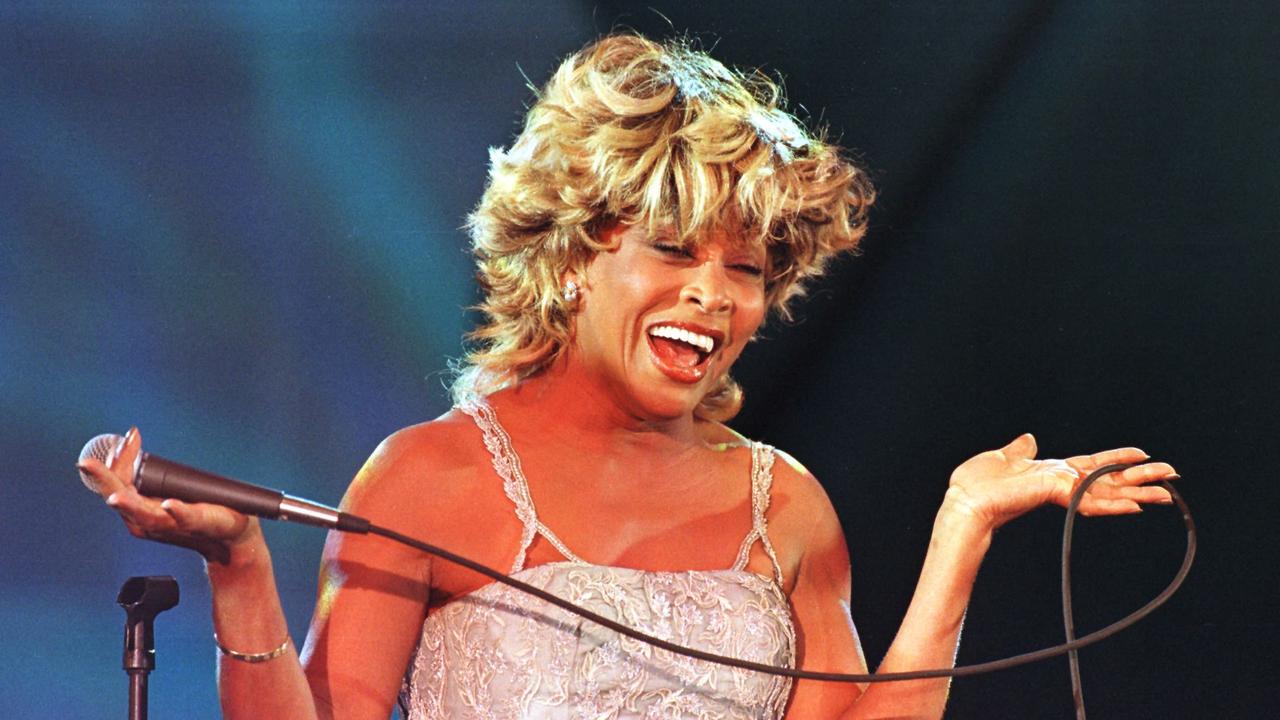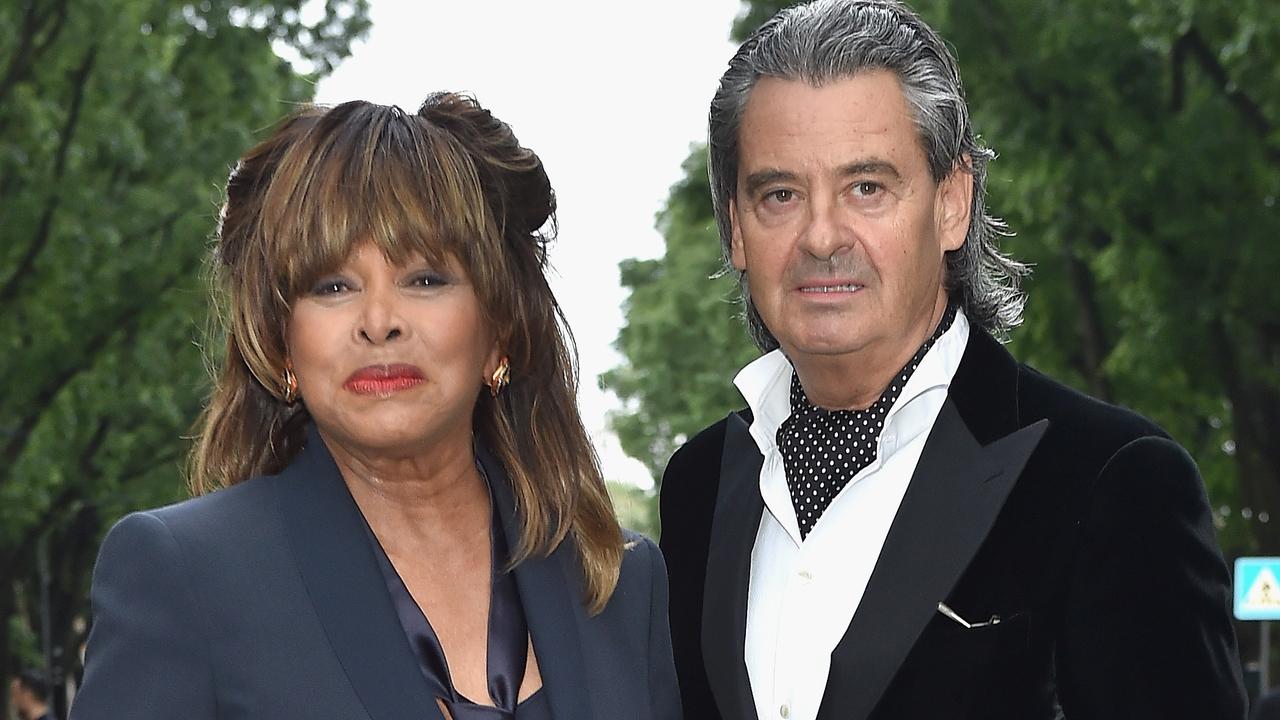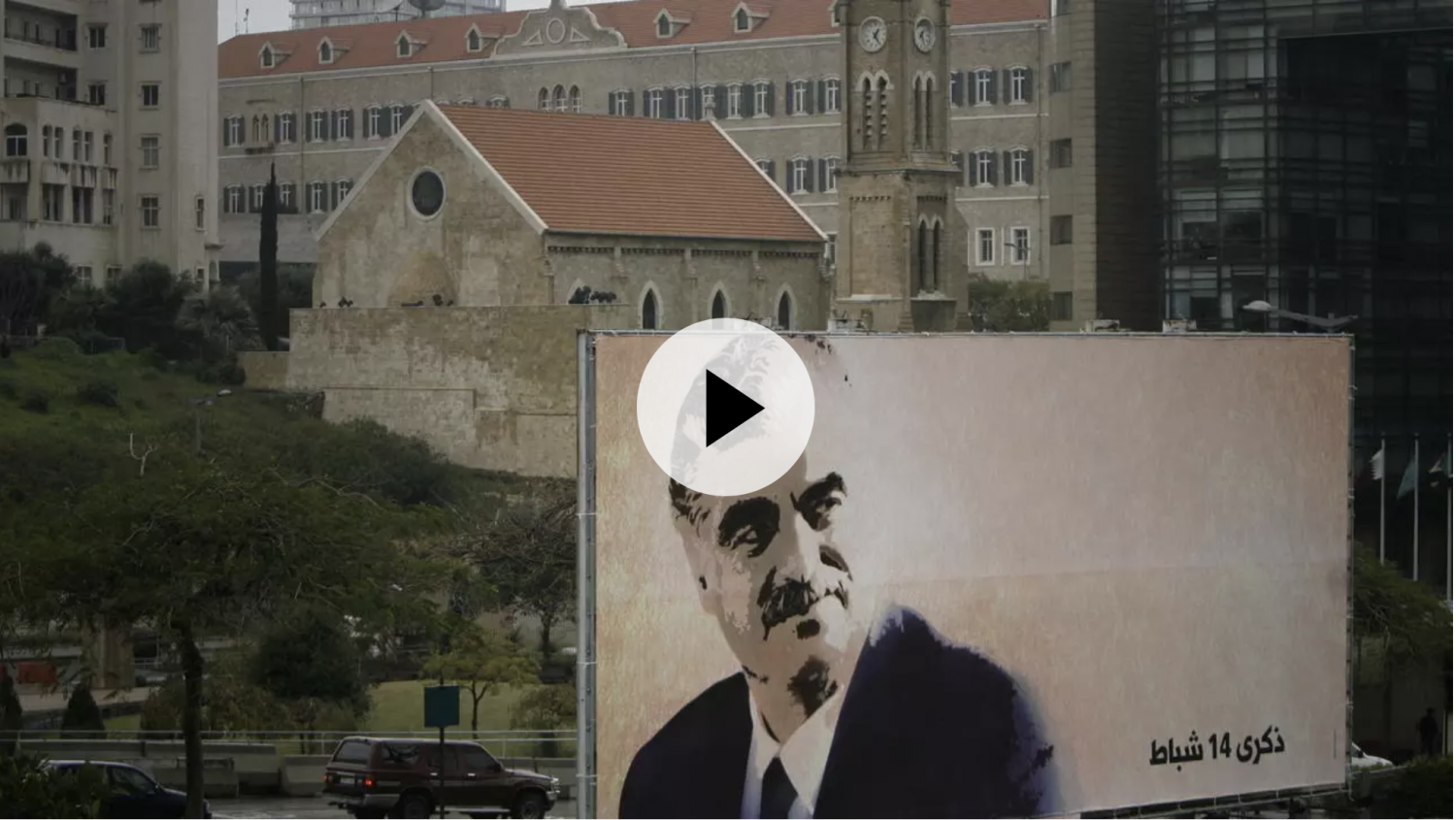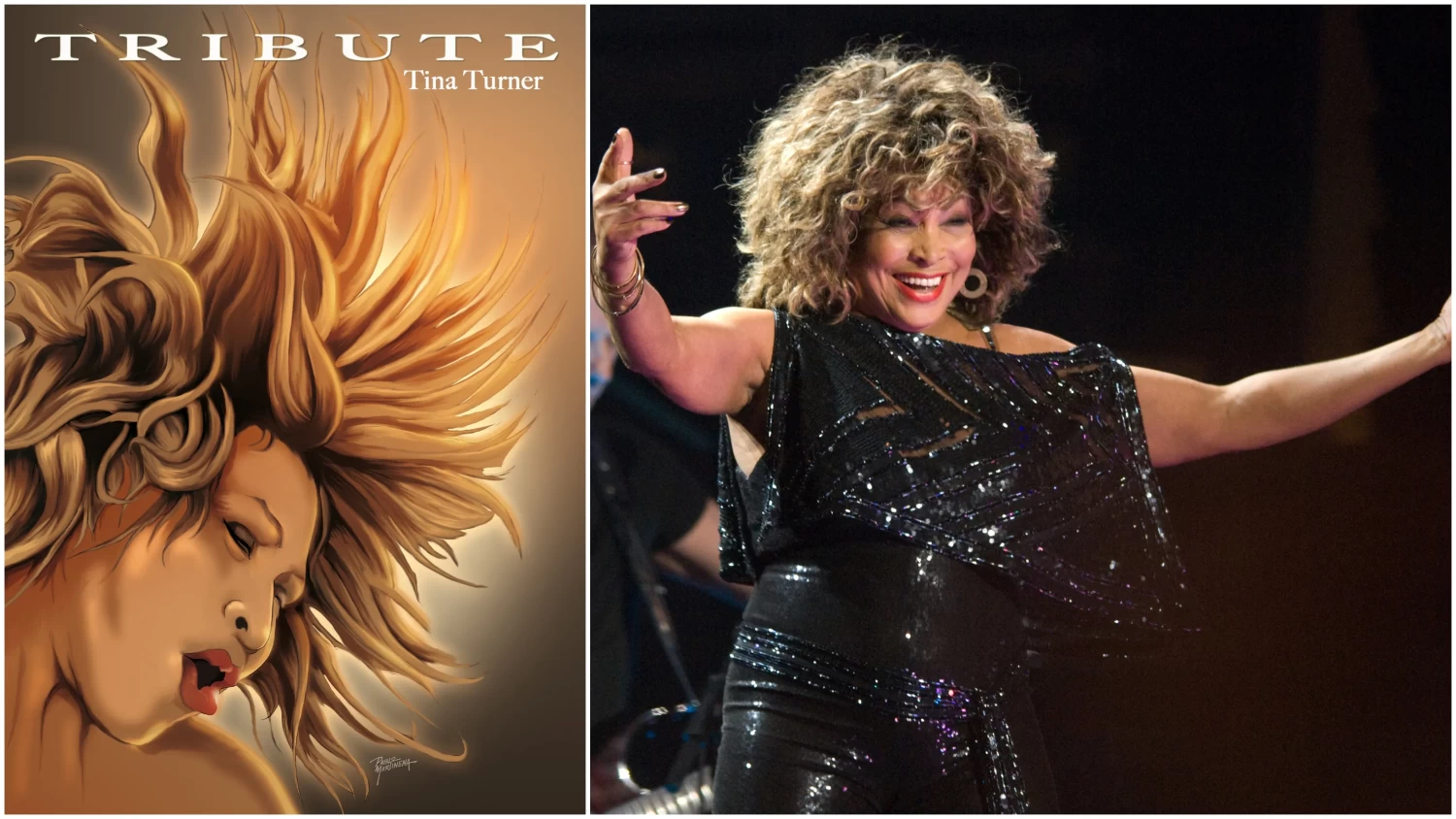
This article is more than
2 year oldTina Turner, Magnetic Singer of Explosive Power, Is Dead at 83
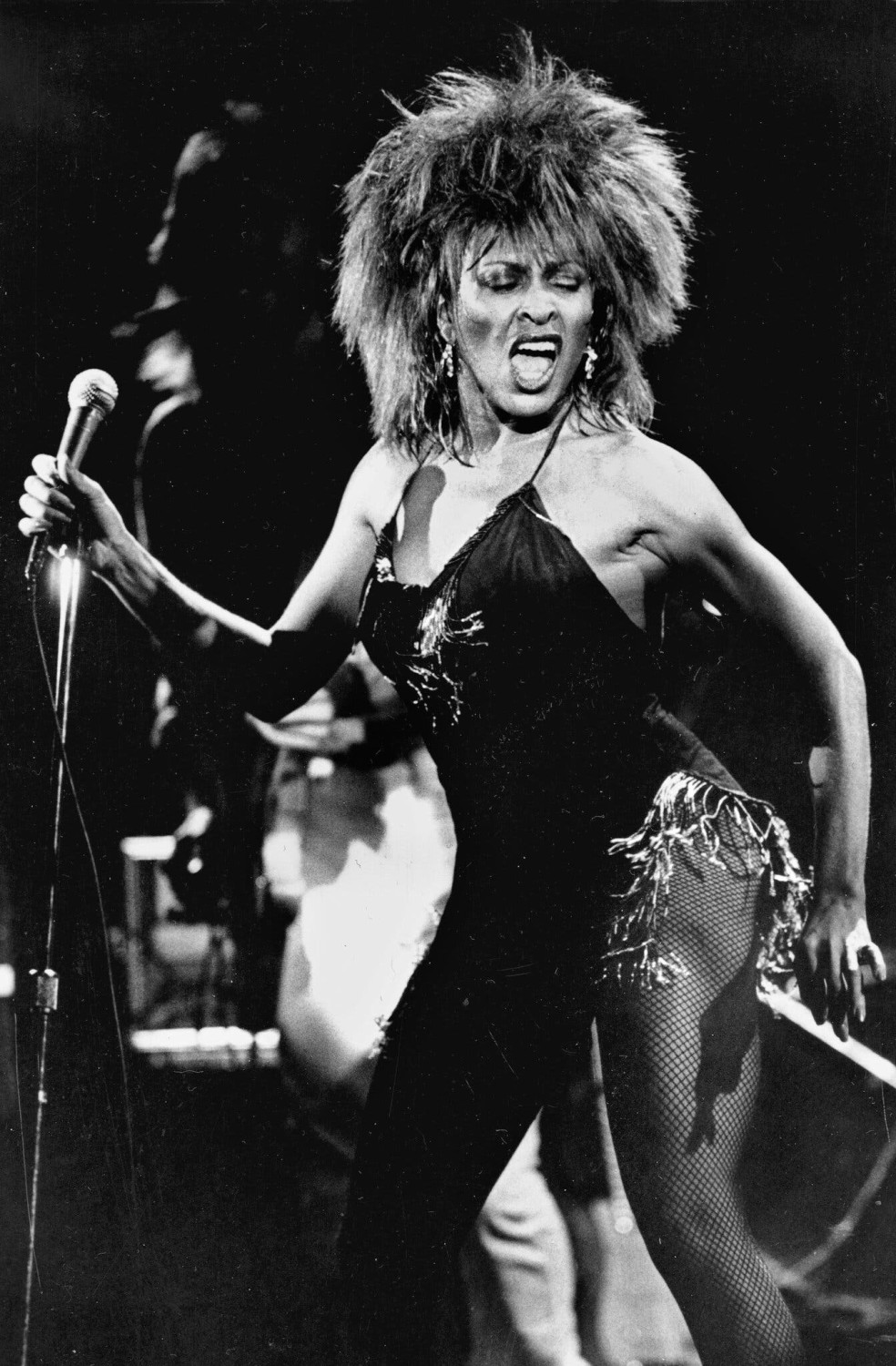
Tina Turner, the earthshaking singer whose rasping vocals, sexual magnetism and explosive energy made her an unforgettable live performer and one of the most successful recording artists of all time, died on Wednesday at her home in Küsnacht, Switzerland, near Zurich. She was 83.
Her publicist Bernard Doherty announced the death in a statement but did not provide the cause. She had a stroke in recent years and was known to be struggling with a kidney disease and other illnesses.
Ms. Turner embarked on her half-century career in the late 1950s, while still attending high school, when she began singing with Ike Turner and his band, the Kings of Rhythm. At first she was only an occasional performer, but she soon became the group’s star attraction — and Mr. Turner’s wife. With her potent, bluesy voice and her frenetic dancing style, she made an instant impression.
Their ensemble, soon renamed the Ike and Tina Turner Revue, became one of the premier touring soul acts in Black venues on the so-called chitlin’ circuit. After the Rolling Stones invited the group to open for them, first on a British tour in 1966 and then on an American tour in 1969, white listeners in both countries began paying attention.
Ms. Turner, who insisted on adding rock songs by the Beatles and the Stones to her repertoire, reached an enormous new audience, giving the Ike and Tina Turner Revue its first Top 10 hit with her version of the Creedence Clearwater Revival song “Proud Mary” in 1971 and a Grammy Award for best R&B vocal performance by a group.

“In the context of today’s show business, Tina Turner must be the most sensational professional onstage,” Ralph J. Gleason, the influential jazz and pop critic for The San Francisco Chronicle, wrote in a review of a Rolling Stones concert in Oakland in November 1969. “She comes on like a hurricane. She dances and twists and shakes and sings and the impact is instant and total.”
But if the Ike and Tina Turner Revue was a success, the Ike and Tina Turner marriage was not. Mr. Turner was abusive. After she escaped the marriage in her 30s, her career faltered. But her solo album “Private Dancer,” released in 1984, returned her to the spotlight — and lifted her into the pop stratosphere.
Working with younger songwriters, and backed by a smooth, synthesized sound that provided a lustrous wrapping for her raw, urgent vocals, she delivered three mammoth hits: the title song, written by Mark Knopfler of Dire Straits; “Better Be Good to Me”; and “What’s Love Got to Do With It.”

Referring to its “innovative fusion of old-fashioned soul singing and new wave synth-pop,” Stephen Holden, in a review for The New York Times, called the album “a landmark not only in the career of the 45-year-old singer, who has been recording since the late 1950s, but in the evolution of pop-soul music itself.”
At the 1985 Grammy Awards, “What’s Love Got to Do With It” won three awards, for record of the year, song of the year and best female pop vocal performance, and “Better Be Good To Me” won for best female rock vocal performance.
The album went on to sell five million copies and ignite a touring career that established Ms. Turner as a worldwide phenomenon. In 1988 she appeared before about 180,000 people at the Maracanã Stadium in Rio de Janeiro, breaking a record for the largest paying audience for a solo artist. After her “Twenty Four Seven” tour in 2000 sold more than $100 million in tickets, Guinness World Records announced that she had sold more concert tickets than any other solo performer in history.
‘Well-to-Do Farmers’
Tina Turner was born Anna Mae Bullock on Nov. 26, 1939, in Brownsville, Tenn., northeast of Memphis, and spent her earliest years on the Poindexter farm in Nutbush, an unincorporated area nearby, where she sang in the choir of the Spring Hill Baptist Church.
Her father, Floyd, known by his middle name, Richard, worked as the farm’s overseer — “We were well-to-do farmers,” Ms. Turner told Rolling Stone in 1986 — and had a difficult relationship with his wife, Zelma (Currie) Bullock.

Her parents left Anna and her older sister, Alline, with relatives when they went to work at a military installation in Knoxville during World War II. The family reunited after the war, but Zelma left her husband a few years later and Anna lived with her grandmother in Brownsville.
After rejoining her mother in St. Louis, she attended Sumner High School there. She and Alline began frequenting the Manhattan Club in East St. Louis, Ill., to hear Ike Turner and the Kings of Rhythm.
“I wanted to get up there and sing sooooo bad,” Ms. Turner recalled in “I, Tina: My Life Story” (1986), written with Kurt Loder. “But that took an entire year.”
One night, during one of the band’s breaks, the drummer, Eugene Washington, handed her the microphone and she began singing the B.B. King song “You Know I Love You,” which Mr. Turner had produced. “When Ike heard me, he said, ‘My God!’” she told People magazine in 1981. “He couldn’t believe that voice coming out of this frail little body.”
In his book “Takin’ Back My Name: The Confessions of Ike Turner” (1999), written with Nigel Cawthorne, Mr. Turner wrote: “I’d be writing songs with Little Richard in mind, but I didn’t have no Little Richard to sing them, so Tina was my Little Richard. Listen closely to Tina and who do you hear? Little Richard singing in the female voice.”
Mr. Turner used her as a backup singer, billed as Little Ann, on his 1958 record “Boxtop.” When Art Lassiter, the group’s lead singer, failed to show up for the recording of “A Fool in Love,” she stepped in. The record was a hit, reaching No. 2 on the Billboard R&B chart and No. 27 on the pop chart.
Mr. Turner gave his protégée — who by now was also his romantic partner — a new name, Tina, inspired by the television character Sheena, Queen of the Jungle. And he renamed the group the Ike and Tina Turner Revue.

It was a dynamic, disciplined ensemble second only to the James Brown Revue, but until “Proud Mary,” it never achieved significant crossover success. Up to that point it had only one single in the pop Top 20 in the United States, “It’s Gonna Work Out Fine” in 1961. The group did generate several hits on the R&B charts, notably “I Idolize You,” “It’s Gonna Work Out Fine” and “Tra La La La La,”but most of its income came from a relentless touring schedule.
Ms. Turner’s relationship with Mr. Turner, whom she married in 1962 on a quick trip to Tijuana, Mexico, was turbulent. He was dictatorial, violent at times and, in the 1970s, hopelessly addicted to cocaine. She left him in 1976, with 36 cents and a Mobil gasoline card in her pocket, and divorced him two years later. He died of a cocaine overdose in 2007.
“When I left, I was living a life of death,” she told People in 1981. “I didn’t exist. I didn’t fear him killing me when I left, because I was already dead. When I walked out, I didn’t look back.”
Her marriage provided much of the material for the 1993 film “What’s Love Got to Do With It,” with Angela Bassett and Laurence Fishburne in the lead roles. Ms. Turner rerecorded some of her hits, and a new song, “I Don’t Wanna Fight,” for the film, but otherwise declined to participate. “Why would I want to see Ike Turner beat me up again?” she said at the time.
A Second Career
In 1966, the record producer Phil Spector, after hearing the Ike and Tina Turner Revue at the Galaxy Club in Los Angeles, offered $20,000 to produce their next song, on condition that Mr. Turner stay away from the studio. The result, “River Deep, Mountain High,” is often regarded as the high-water mark of Mr. Spector’s patented “wall of sound.” It failed in the United States, barely reaching the Top 100, but it was a big hit in Britain, where it marked the beginning of a second career for Ms. Turner.
“I loved that song,” she wrote in her 1986 memoir. “Because for the first time in my life, it wasn’t just R&B — it had structure, it had a melody.” She added: “I was a singer, and I knew I could do other things; I just never got the opportunity. ‘River Deep’ showed people what I had in me.”

After she walked out on her marriage, encumbered with debt, Ms. Turner struggled to build a solo career, appearing in ill-conceived cabaret acts, before signing with Roger Davies, the manager of Olivia Newton-John, in 1979. Guided by Mr. Davies, she returned to the gritty, hard-rocking style that had made her a crossover star and would propel her through the coming decades as one of the most durable performers on the concert stage.
Her fellow artists took notice. In 1982, Martyn Ware and Ian Craig Marsh, of the band and production company known as the British Electric Foundation, recruited her to record the Temptations’ 1970 hit “Ball of Confusion” for an album of soul and rock covers backed by synthesizers. Its success led to a second collaboration, a remake of Al Green’s “Let’s Stay Together.” A surprise hit in the United States and Britain, it was the turning point that led to “Private Dancer.”
Ms. Turner followed the runaway success of “Private Dancer” with two more hit albums: “Break Every Rule” (1986) and “Foreign Affair” (1989), which contained the hit single “The Best.”

She made an impact onscreen as well. Ten years after she solidified her persona as a rock ’n’ roller with a riveting performance as the Acid Queen in Ken Russell’s film version of “Tommy,” the Who’s rock opera, she drew praise for her performance as Aunty Entity, the iron-fisted ruler of postapocalyptic Bartertown, in “Mad Max Beyond Thunderdome” in 1985.
That film also provided her with two more hit singles, “We Don’t Need Another Hero (Thunderdome)” and “One of the Living,”which was named the best female rock vocal performance at the Grammys in 1986.
In 1991 she and Mr. Turner, in prison at the time for cocaine possession, were inducted into the Rock & Roll Hall of Fame. (She was inducted again as a solo artist in 2021.) She received a Kennedy Center Honor in 2005 and a Grammy lifetime achievement award in 2018.
In 1985 she began a relationship with the German music executive Erwin Bach, whom she married in 2013 after moving with him to Küsnacht and becoming a Swiss citizen. He survives her. Ron, her only child with Mr. Turner, died of colon cancer complications in 2022. Another son, Craig, from her relationship with Raymond Hill, the saxophone player for the Kings of Rhythm, died by suicide in 2018. Her sister, Alline Bullock, died in 2010. Ms. Turner raised two children of Mr. Turner’s, Ike Jr. and Michael.
Complete information on her survivors was not immediately available.
After releasing the album “Twenty Four Seven” in 1999, at 60 and touring to promote it, Ms. Turner announced her retirement. It did not last. In 2008, after performing with Beyoncé at the Grammy Awards, she embarked on an international tour marking her 50th year in the music business.

She announced her retirement again a few years later, but she remained active in other ways. In 2018, she published her second memoir, “My Love Story.”
She and Mr. Bach were executive producers of “Tina: The Tina Turner Musical,” a stage show based on her life and incorporating many of her hits, which opened in London in 2018 and in Hamburg and on Broadway in 2019; Ms. Turner worked with the show’s choreographer and shared memories with its writers.
While reviews were mixed, the musical earned 12 Tony Award nominations; Adrienne Warren, who starred as Ms. Turner, won the award for best actress in a leading role. “In a performance that is part possession, part workout and part wig,” Jesse Green wrote in a review for The Times, “Adrienne Warren rocks the rafters and dissolves your doubts about anyone daring to step into the diva’s high heels.”
The show closed after four months because of the pandemic lockdown, reopening in October 2021 before closing again a year later and going on the road. There are currently two productions: one that is touring the U.S. and one in London.
Through it all, Ms. Turner’s music endured.
“My music doesn’t sound dated; it’s still standing strong,” she told The Daily Mail in 2008. “Like me.”
A correction was made on May 24, 2023: An earlier version of this obituary misstated at one point where Ms. Turner attended high school. As correctly noted elsewhere, it was St. Louis — not East St. Louis, Ill.When we learn of a mistake, we acknowledge it with a correction. If you spot an error, please let us know at nytnews@nytimes.com.Learn more
A version of this article appears in print on May 25, 2023, Section A, Page 1 of the New York edition with the headline: Tina Turner, 83, Rock Queen Whose Voice and Legs Wouldn’t Quit, Dies. Order Reprints | Today’s Paper | Subscribe
